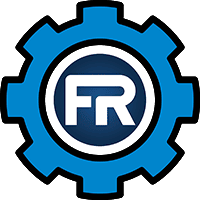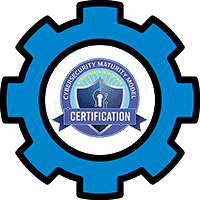Federal contractors and cloud service providers face an increasingly complex web of compliance requirements. Two frameworks dominate this landscape: CMMC and FedRAMP. This challenge hits hardest for organizations serving multiple federal sectors or providing both traditional contracting services and cloud solutions. These companies must navigate overlapping requirements, duplicate their documentation efforts, and maintain separate compliance programs to ensure adherence to regulations.
The answer isn’t choosing between frameworks, but developing innovative strategies that leverage their commonalities while respecting what makes each one unique. CMMC automapping shifts the focus from merely managing compliance to orchestrating it intelligently.
Why Automapping Matters
Automapping isn’t just about making compliance easier. It’s about turning a necessary burden into a competitive advantage. Here’s why it makes such a difference:
- Efficiency Gains: Organizations typically cut compliance-related admin work by 30-50%, freeing up security teams to focus on strategic initiatives instead of endless documentation
- Consistency Improvements: Develop standardized approaches to common security goals instead of implementing different solutions for the same risks across frameworks
- Risk Reduction: Identify where one framework’s requirements exceed another’s, ensuring the highest standards apply everywhere and preventing dangerous gaps
- Competitive Advantage: Clients increasingly expect sophisticated compliance capabilities that go beyond basic checkbox exercises—integrated compliance management often influences contract decisions
- Long-Term Value: Early investments in automapping create sustainable advantages that compound over time and become harder for competitors to replicate
Understanding the Frameworks
 Getting CMMC automapping right requires understanding what makes each framework tick. While CMMC and FedRAMP both build on NIST standards, they’ve evolved into distinct compliance ecosystems with different priorities and approaches.
Getting CMMC automapping right requires understanding what makes each framework tick. While CMMC and FedRAMP both build on NIST standards, they’ve evolved into distinct compliance ecosystems with different priorities and approaches.
CMMC Characteristics
- Foundation: Built on NIST SP 800-171 with a three-level maturity progression model
- Focus: Emphasizes organizational capability development and institutional cybersecurity maturity
- Evidence Requirements: Process documentation, training records, and operational demonstrations that prove sustainable security practices
- Assessment: Third-party assessors conduct comprehensive evaluations at specific points in time
FedRAMP Characteristics
- Foundation: Based on NIST SP 800-53 with heavy emphasis on cloud-specific security requirements
- Focus: Technical validation and continuous monitoring in dynamic cloud environments
- Evidence Requirements: Technical artifacts, system logs, and automated compliance reporting
- Assessment: Continuous monitoring with ongoing evidence generation and compliance validation
The key insight here is that these frameworks aren’t trying to solve the same problems in the same ways. CMMC prioritizes organizational maturity and sustainable practices, whereas FedRAMP focuses on technical controls and continuous validation.
Challenges in Automapping
 Automapping isn’t a simple copy-and-paste exercise. Organizations face several persistent challenges that require thoughtful strategies and ongoing attention.
Automapping isn’t a simple copy-and-paste exercise. Organizations face several persistent challenges that require thoughtful strategies and ongoing attention.
- Structural Differences: CMMC organizes around practices and capabilities, whereas FedRAMP structures around technical safeguards, resulting in a rarely achieved one-to-one correlation. Mapping relationships spans different organizational levels, requiring a sophisticated understanding of how practices relate to controls.
- Language and Interpretation Issues: Frameworks describe similar security goals using completely different terminology, making automated tools less reliable. Identical terms may carry different meanings across frameworks, requiring expert validation of apparent correlations.
- Version Management Complexity: CMMC and FedRAMP updates occur on different schedules, leading to control drift over time. Each framework adapts to emerging threats differently, causing previously aligned requirements to diverge.
- Evidence Requirement Gaps: What CMMC considers adequate policy documentation may require extensive technical validation under FedRAMP. Evidence gaps can create compliance vulnerabilities where organizations think they’ve achieved dual compliance but only satisfy one framework.
- Organizational Silos: Different teams often manage each compliance program, creating resistance to integration efforts. Framework-specific experts may resist unified approaches that might compromise their perceived value.
Strategies for Effective Automapping
Successful CMMC automapping requires systematic approaches that address these challenges while maximizing opportunities for alignment. The key is striking a balance between automation and human expertise to achieve reliable and maintainable results.
- Outcome-Focused Correlation: Both frameworks prioritize protecting sensitive information, though implementation guidance differs significantly. Focus on the underlying security outcomes each control seeks to achieve rather than literal language matches.
- Context-Aware Matching: Develop mapping matrices that account for system type, data sensitivity, and operational context. Cloud-native applications may enable direct correlation, while hybrid environments require more nuanced strategies.
- Dynamic Management: Modify correlations as frameworks mature to prevent compliance drift. Establish procedures for tracking framework updates and assessing the impacts of mapping.
- Evidence Strategy: Focus documentation efforts where they’ll have maximum compliance impact. Identify where single evidence sources can satisfy multiple requirements.
- Human-Technology Balance: Rely on human expertise to validate mapping accuracy and catch edge cases that automation might miss. Use technology to identify potential correlations and flag inconsistencies.
- Risk-Based Prioritization: Accept broader correlations in lower-risk areas, subject to periodic review. Invest in detailed mapping analysis in high-impact security areas first.
Practical Steps for Organizations
Getting from strategy to implementation requires a structured approach that delivers measurable results. Here’s how to build sustainable automapping capabilities that actually work.
- Create a comprehensive inventory of all applicable controls from both frameworks. You’ll want to categorize these by security domain, system applicability, and implementation complexity. This foundation work enables systematic analysis and helps you avoid missing critical requirements that might not seem obviously related.
- Control matrices serve as your primary documentation and maintenance tools. These should capture direct correlations, partial alignments, framework-specific requirements, and evidence mapping relationships. Include contextual information about when specific mappings apply and what might change their strength. Regular updates ensure accuracy as frameworks evolve and your systems change.
- Don’t reinvent the wheel. Start by analyzing your existing compliance documentation to find where current implementations already address multiple framework requirements. This often reveals natural alignment opportunities that you can document, validate, and expand systematically.
- Consider automated tools to enhance accuracy and reduce maintenance overhead, but evaluate them carefully against your specific needs. The most effective approaches combine automated correlation analysis with expert validation and ongoing human oversight. Technology should enhance human judgment, not replace it.
- Work toward unified control implementations that satisfy multiple requirements simultaneously rather than maintaining separate systems for each framework. This reduces complexity while often exceeding individual framework minimums, creating stronger overall security.
- Design your monitoring strategies from the start to account for multi-framework requirements. Where possible, generate evidence that satisfies both CMMC and FedRAMP needs, while maintaining framework-specific monitoring where necessary.
- Establish regular review processes to ensure your mapping relationships stay accurate and effective. Schedule periodic assessments of framework updates and validation of continued alignment with your operational systems.
Align Your CMMC and FedRAMP Controls with Continuum GRC
Automapping CMMC and FedRAMP controls offers significant strategic opportunities alongside complex technical challenges. The potential benefits (dramatic efficiency improvements, enhanced security consistency, and substantial cost reductions) make it worthwhile to invest in developing sophisticated mapping capabilities.
Continuum GRC is a cloud platform that stays ahead of the curve, including support for all certifications (along with our sister company and assessors, Lazarus Alliance).
- FedRAMP
- StateRAMP
- NIST 800-53
- FARS NIST 800-171 & 172
- CMMC
- SOC 1 & SOC 2
- HIPAA
- PCI DSS 4.0
- IRS 1075 & 4812
- COSO SOX
- ISO 27001 + other ISO standards
- NIAP Common Criteria
- And dozens more!
We are the only FedRAMP and StateRAMP-authorized compliance and risk management solution worldwide.
Continuum GRC is a proactive cybersecurity® and the only FedRAMP and StateRAMP-authorized cybersecurity audit platform worldwide. Call 1-888-896-6207 to discuss your organization’s cybersecurity needs and learn how we can help protect its systems and ensure compliance.
[wpforms id= “43885”]